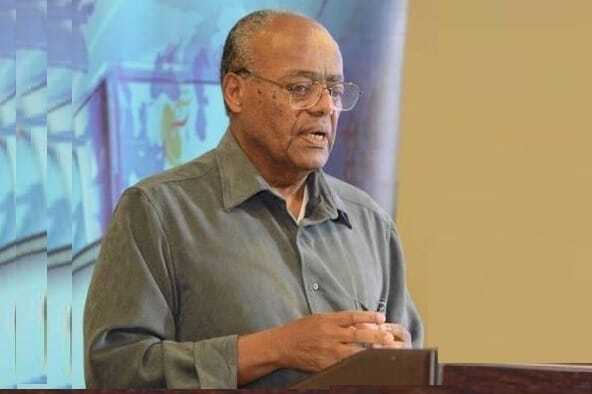The Africa Union Transition Mission in Somalia (Atmis) is facing fresh fears of falling behind on key benchmarks against which the international community renewed its stay in the Horn of Africa country to complete its stabilisation.
This week, the African Union Peace and Security Council (AUPSC) said that while the Atmis mission has improved offensives on extremist groups and improved the general security of the country, there are indications some of the key steps ahead may fall off plan.
The 15-member AU organ, which deals with problems of peace and security on the continent, said shortage of funding are likely to eat into the Mission’s plan, a risky thing for nascent Somali security forces.
The Council “expresses deep concern over the inadequate, unsustainable and unpredictable financing for ATMIS, including the significant funding shortfalls, which continues to persist,” it said in a communique of the 1143rd meeting in Addis Ababa. The meeting was actually held on March 7 but the dispatch was only publicised this week on Tuesday.
The AUPSC said it was asking, again, the UN Security Council to hold “a special session on predictable, adequate, sustainable and multi-year funding for Atmis for its full duration, which has still not yet been facilitated. The African Union had first asked the UN Security Council to consider this request last year in May. That no one has come forth to discuss predicable funding for Atmis is, however, not just an AU worry.
The European Union, traditionally a key funder of the Mission, says that Somalia needs more from the international community in terms of funding, security forces training and support for its internal power sharing reforms, in order for its transition to take shape, with only 20 months remaining before Atmis exits the country.
Deliver a full transition
By the time of its full exit on December 31, 2024, the AU force must deliver a full transition; relinquish territory under its control and hand over all security duties of the uniformed, police and civilian personnel, to the Somali Security Forces.
On March 27, EU Special Representative for the Horn of Africa Dr Annette Weber told the UN Security Council Private Meeting on Somalia that the ambitious timelines linked to significant reform of the Somali security sector are largely not being met.
The timelines are based on targets that the AU force was meant to oversee, contained in benchmarks requested in the UN Security Council Resolution 2628 and formulated jointly by the Federal Government of Somalia, the UN, the AU and EU in the Quartet.
“Now, almost exactly a year into the Atmis mandate, very few of these benchmarks have been achieved,” she said on March 27, adding “We urge implementation by all actors and encourage long-term planning, including with the TCCs (troop contributing countries) and the AU, on a post-Atmis security architecture.”
Strategies, concrete actions
The AU says continuing successful offensives by Atmis must be “accompanied by strategies and concrete actions to extend governance and state authority in newly liberated areas,” as well launching of emergency aid programmes refurbishment of water wells, clinics and shelters and other facilities destroyed by Al-Shabaab.
As it is, Atmis is tasked with helping achieve the Somali Transition Plan (STP), as well as the Somali National Stabilisation Strategy. It does this by boosting security and enabling access of emergency and long-term aid partners to newly liberated areas. It is also tasked with supporting Somali government institutions especially the security forces. All that cost money.
In a November 2022 communique, the AU Peace and Security Council had delayed by six months the scheduled drawdown by 2000 personnel initially planned for December 31 2022. It was a decision that signalled gaps in the rebuilding of the Somali security forces to gradually take over the mantle of policing and defending the country.
Al-Shabaab attack
The AU Peace and Security Council decision in November came just weeks after one of the deadliest attacks by Al-Shabaab with twin car bomb explosions in the capital Mogadishu, which killed at least 121 people and injured more than 300 on the afternoon of October 29 2022.
The UNSC also instructed the peacekeeping force, as per the Concept of Operations (Concops) adopted to guide the transition process, to cede control of strategic areas and forward operating bases (FOBs) that it had occupied for years to the Federal Government of Somalia security forces to take control of.
But over the past year, Atmis has surrendered only one FOB Maslah, which was handed over in January 2023.
The force, under its previous mandate as the African Union Mission in Somalia (Amisom) handed over other strategic facilities, including the Mogadishu Stadium, Mogadishu University, Jaad Siad Military Academy.
Nevertheless, the AU is all praise for its peacekeeping force, claiming that since it reconfigured in April last year, the mission has achieved tremendous gains in securing territories, thanks to the commitment of the force’s military, police and civilian units.
“An overview of the situation in Atmis area of responsibility in the past year shows a decrease in Al-Shabaab activities with the security situation remaining calm,” said Ambassador Mohamed El-Amine Souef, Special Representative of the Chairperson of the African Union Commission for Somalia.
Long-term peace and security
Ambassador Souef said this while addressing journalists at a joint press conference held at the Mission Headquarters in Mogadishu on April 1 2023 adding that Atmis remains committed to assisting Somalia achieve long-term peace and security.
In his own address to the UN Security Council on March 27, Ambassador Souef indicated that the peacekeeping and Somali security forces – “have degraded al Shabaab” and continue to conduct joint targeted operations across its mandated sectors, which has denied Al-Shabaab freedom of movement.
“Our ability to degrade Al-Shabaab has now seen our forces increase their ability to secure Somalia’s main supply routes, and to protect main population centres and vital installations and facilities,” he explained.
Source: The East African










